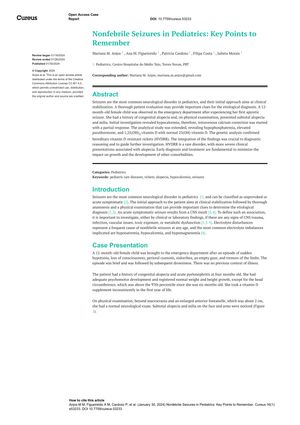TLDR Early diagnosis and treatment of hereditary vitamin D-resistant rickets (HVDRR) are crucial to prevent growth issues and other health problems.
Seizures are the most common neurological disorder in pediatrics, and initial management focuses on clinical stabilization. A 12-month-old girl with congenital alopecia experienced her first nonfebrile seizure, leading to the discovery of hypocalcemia and subsequent partial response to intravenous calcium. Further tests showed hypophosphatemia, elevated parathormone, and normal 25(OH) vitamin D, leading to a diagnosis of hereditary vitamin D-resistant rickets (HVDRR). This rare disorder, often associated with alopecia, requires early diagnosis and treatment to reduce impacts on growth and prevent other comorbidities.
52 citations
,
August 1993 in “Clinical endocrinology” Intravenous and oral calcium effectively treated vitamin D dependent rickets type II, improving growth and bone health.
 April 2023 in “Clinical Chemistry and Laboratory Medicine”
April 2023 in “Clinical Chemistry and Laboratory Medicine” The document concludes that inflammation markers can be used in diabetes, vitamin D3 affects immune pathways, hyperthyroidism changes hormone levels, androgen levels help diagnose Adrenocortical Carcinoma, erectile dysfunction is linked to diabetes, hypogonadism is common in HIV-infected males, and hormones can be biomarkers for various conditions.
 March 2023 in “International journal of trichology”
March 2023 in “International journal of trichology” Six genetic conditions are often linked to complete scalp hair loss in children.
98 citations
,
February 2010 in “Dermatology Online Journal” Vitamin D may help treat hair disorders.
18 citations
,
April 2010 in “Journal of steroid biochemistry and molecular biology/The Journal of steroid biochemistry and molecular biology” The vitamin D receptor helps regulate skin and hair health independently of its usual vitamin D ligand.
37 citations
,
October 2006 in “Archives of Biochemistry and Biophysics” A unique gene mutation causes vitamin D-resistant rickets without causing hair loss.



